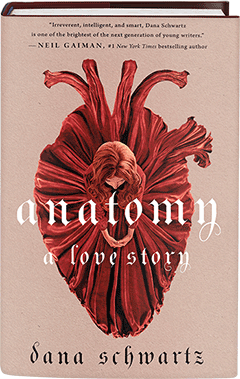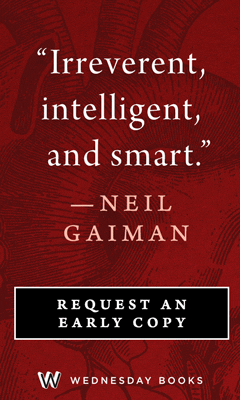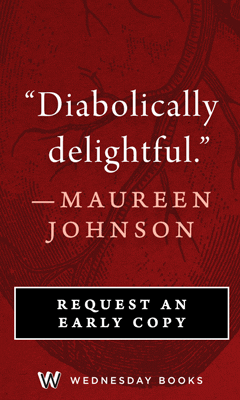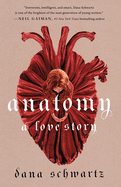Anatomy: A Love Story
by Dana Schwartz
In Anatomy, Dana Schwartz (Choose Your Own Disaster; The White Man's Guide to White Male Writers of the Western Canon) pulls back the curtain on the thrilling and fascinating world of 19th-century surgeons and the bodies they dissect, as seen through the eyes of 17-year-old Hazel Sinnett in 1817 Edinburgh, Scotland. Part romance, part gory historical curiosity and part pulsating page-turner, Schwartz's novel is thrumming with life, even as it looks compassionately at what is dead and dying.
Hazel has her heart set on becoming a surgeon. It doesn't matter that no woman can be a physician, let alone a surgeon. It doesn't matter that she's the eldest daughter of a lord and the niece of a viscount, and is expected to marry well. It doesn't even matter that she's been basically betrothed since birth to her dry-as-a-bone cousin, Bernard, who doesn't want such a "morbid" wife. Hazel is determined not only to be a surgeon, but also to find a cure for Roman fever, the deadly disease that killed her older brother and seems to be sweeping Scotland again.
Hazel dresses as a man in order to attend lectures by the famed Dr. Beecham and the less-pleasant Dr. Straine. But when her true identity is revealed, she must prove her worth by passing the medical exam with no professional help. Desperate for experience, Hazel teams up with Jack Currer, a handsome and scrappy resurrection man, to dig up the bodies she needs. Fortunately, bodies aren't hard to find in a contagion-ridden city. But through Jack, Hazel begins to see there's more plaguing the streets than just Roman fever: there are sightings of strange men prowling the cemeteries, mysterious disappearances and unexplained wounds among the working classes. And as Hazel begins practicing on dead and living patients alike, she and Jack discover a secret darker than they could have imagined.
Nineteenth-century Edinburgh provides a hauntingly atmospheric backdrop to Hazel and Jack's gothic-inspired tale. Filled with secret passageways, lantern-lit graveyards and cobwebbed theaters, the novel's setting is not only delightfully textured, with its period-specific macabre aesthetic, but also rich in historical detail. Excerpts from Dr. Beecham's Treatise on Anatomy open most chapters and provide extra detail not only on the fascinating history of surgery during this period, but also on the subtly disturbing cultural, political and social underpinnings that "scientific" beliefs often uphold. Slyly intelligent in its exploration of one young woman's career ambitions and the uncanny divisions between "care" and exploitation in the medical field, Anatomy has more than its fair share of social criticism creased between pages of romance, mystery and thrills.
And, to be sure, Anatomy does pack a punch when it comes to thrills. Midnight grave robberies, the "unpleasant squelching of the blood and viscus between... fingers" and unpracticed medical students "hack[ing] away at the innards" all lead up to an appropriately blood-splattered climax. While fans might say that Anatomy is most akin to the genre-dexterous Schwartz's podcast Noble Blood--which deep-dives into the murderous lives of historical royals--it is still host to her surprising and irreverent humor (on display in her popular Twitter account @GuyInYourMFA). Schwartz's wit bubbles up at unexpected moments and often characterizes the corset-loosened chemistry between Hazel and Jack. For example, after spending a heart-pounding night hiding in a dug-up grave with an eyeless corpse, Jack (poorly) plays the part of the haunting spirit that a local priest mistakes him for: " 'Yes! We be the undead woken! And we'll be'--he tugged on Hazel's arm--'going now. Arghhhh!' "
These moments of lightness pair with more barbed jabs at Hazel's betrothed, Bernard, the novel's incarnation of Schwartz's favorite target: the privileged white man who, though self-assuredly uptight, could be knocked over by a breeze. Bernard begins the novel as the seemingly innocuous butt of Hazel's internal jokes: "He was nice enough, his skin relatively clear. He was, well, dull, but so were the rest of them." As with all truly great humor, the jokes at Bernard's expense become increasingly earned as well as unsettling when the true extent of the societal power given to such a frail man becomes apparent.
Thus, as with all of Schwartz's work, there is more to Anatomy than immediately meets the eye. Like Hazel, readers may begin the book eager to indulge in the strangely pleasurable and fascinating experience of witnessing grotesquerie. Hazel admits that after receiving a missive describing a hanging, she "had read [the letter] so many times she had memorized every line: the way the convict's head had jerked when the rods were lowered to its temples, how its eyelids had scrolled open." But also like Hazel, the reader's awareness of such violence as people being "trotted out for yet another performance, yet another matinee for yet another crowd" begins to transform the way one consumes the novel's gore. The true heart of Anatomy lies in Hazel's compassionate, patient-centered approach to medicine and the knowledge that living bodies are animated not only by organs, but by those for whom they care. --Alice Martin








